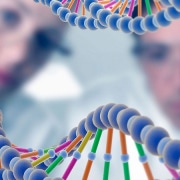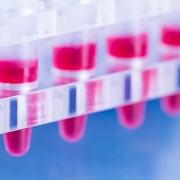Consumer genetic testing: expectation and reality
In the first of two articles on the subject, we explore new research that shines a light on the pitfalls of our new favourite pastime
The second of this week’s articles on DTC testing is available here.
‘Direct-to-consumer’ (DTC) genetic tests – those available for purchase by any member of the public – continue to grow in popularity. But new research published in the British Medical Journal (BMJ) warns that these tests should not be used as a basis for medical decision-making, and identifies a number of ways in which they can be inaccurate or misleading.
“Genetic tests sold online and in shops should absolutely not be used to inform health decisions without further scrutiny,” said the report’s lead author Anneke Lucassen, professor of clinical genetics at the University of Southampton.
DTC and clinical tests: what’s the difference?
When a test is ordered in the NHS it will be targeted to answer the specific clinical question: testing for a particular variant known to run in a family; analysis of a whole gene when there are multiple variants that could be responsible for a patient’s condition in only that gene; a gene panel test if there are variants in multiple genes associated with a condition; or whole exome or whole genome sequencing when it is not clear where relevant genomic variants could be found. Different tests are also available to look for extra or missing chromosomes, or rearrangements of parts of chromosomes, for example.
By contrast, most DTC tests are SNP arrays as standard. These tests look at predetermined locations in the genome where variation is known to occur. As such they are good at identifying common variants, but unlikely to identify rare ones accurately.
The devil is often in the detail
Rarer variants are very significant in disease risk, and missing them can mean missing an important part of the story. For example, there are hundreds or possibly thousands of variants within the genes BRCA1 and BRCA2 which are associated with increased risk of breast and ovarian cancers. As an example, one DTC testing company’s test screens for three of these variants, meaning it would not detect clinically-relevant variants in around 80% of people in the UK, according to the BMJ paper.
Professor Lucassen expressed concern that receiving a negative result on a DTC test would be misinterpreted by some patients as an ‘all clear’. She said: “Most people who come to clinic ask: ‘Have I got the gene for breast cancer?’ and imagine it’s a single test, not that the test involves looking through around 20,000 letters of the genetic code to see if any one of them might be different.”
Beware false positives
As well as providing ‘reassuring’ results that may deter people from seeking medical advice, test results can also suggest greater genetic risk inaccurately (‘false positives’). This can cause unnecessary anxiety and has occasionally resulted in drastic action such as unnecessary surgery. The authors discuss this uncommon but concerning phenomenon in their paper, as does Dr Angela George in our recent video.
DTC providers stress that their tests are not diagnostic, but some allow users to download their full SNP data, which can then be uploaded to third parties offering to interpret the results.
In a podcast accompanying the BMJ article, the authors discuss the fact that these third party analyses are especially likely to return false positives, because: first, incomplete genomic information makes it easier to misinterpret an artefact as potentially worrying; and, second, the databases of significant variants that they compare data to can be outdated.
Clinical knowledge of which variants are associated with increased risk is constantly evolving, as discussed by and Dr Richard Scott in our Clinical Genetics in Action film series; accurate and cautious interpretation of genomic variants is paramount.
Perception vs reality
In their podcast, the report’s authors draw attention to the important issue of public perception when it comes to genetic test results, which are typically seen as more ‘technical and accurate’ than other factors such as a known family history.
Many diseases are associated with the cumulative effect of variants found in different places in the genome, rather than a single variant. “The more we have learnt about our genetic code we’ve realised there are very few single strong risk factors. Most risk factors act in a context, for example high blood pressure isn’t necessarily going to give you a stroke,” said Professor Lucassen. In short, the identification of a health risk via genetic testing does not necessarily mean that an individual will develop the associated condition(s).
Polygenic risk scores offer a way to quantify the risk for some diseases, and many DTC tests now report them; but their predictive power should not be overestimated. Professor Lucassen explains in the podcast that the value of polygenic risk scores is currently limited to a public health setting – stratifying patients according to risk and treating them accordingly – rather than for individuals.
Dealing with test results
The authors conclude that clinicians should only base decisions on the results of genetic tests when they are confident about the provenance and interpretation of the result. They also advise that patients should be referred for clinical genetic testing if they meet referral criteria, irrespective of DTC test results.
“The more we look at healthy people the more we realise that if you look at their genetic code you might find all sorts of variation that has been published as really being quite nasty and predictive but they live into old age without any signs of that,” said Professor Lucassen. “So far we have only really studied the genomes of ill people to confirm a diagnosis. If you start off with the genome of a healthy person, we’re much less able to predict what might happen than we thought we were able to.”
To learn more about the team charged with the challenging task of performing testing and interpreting results see our Careers in Genomics web page.
–









